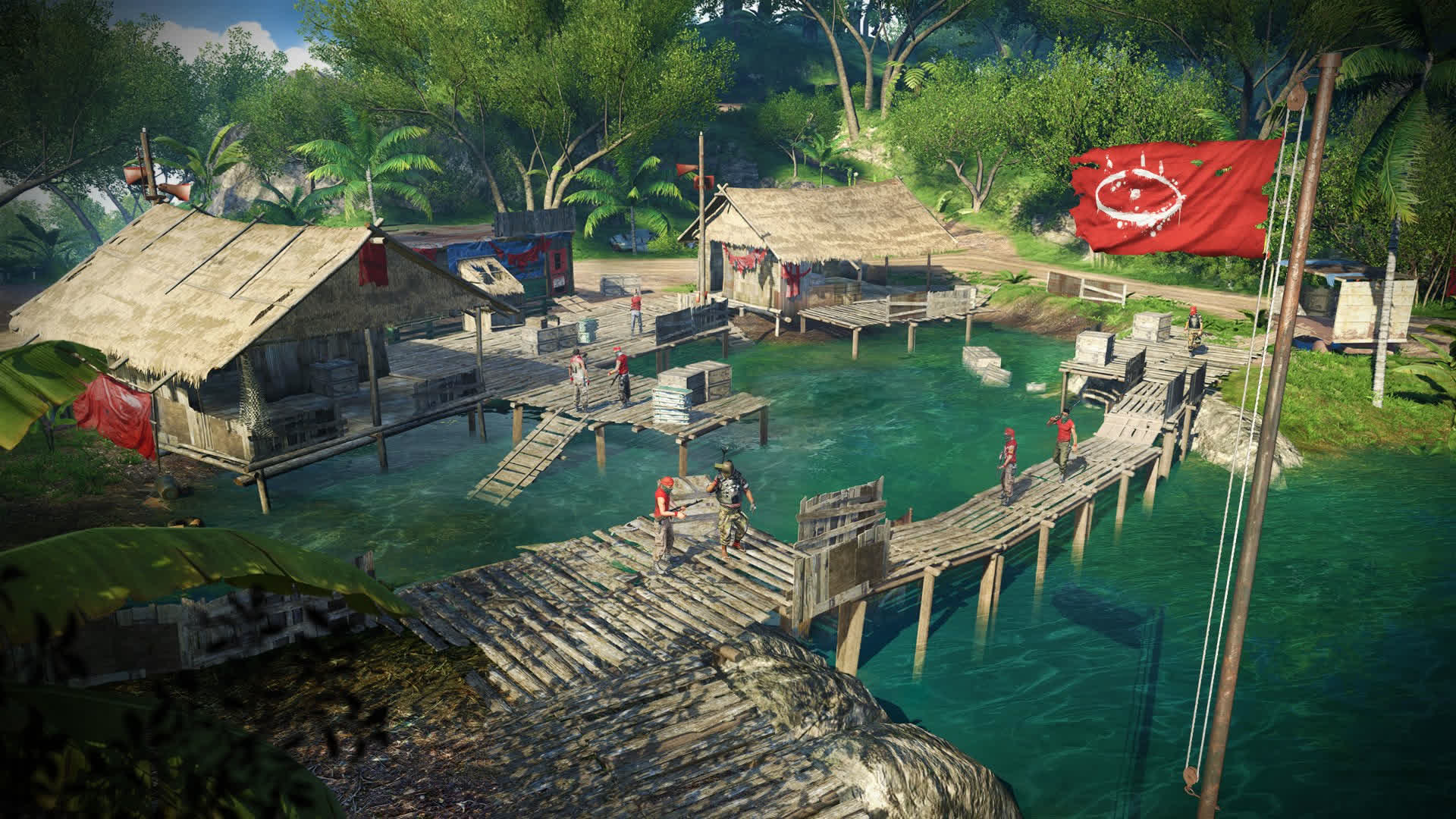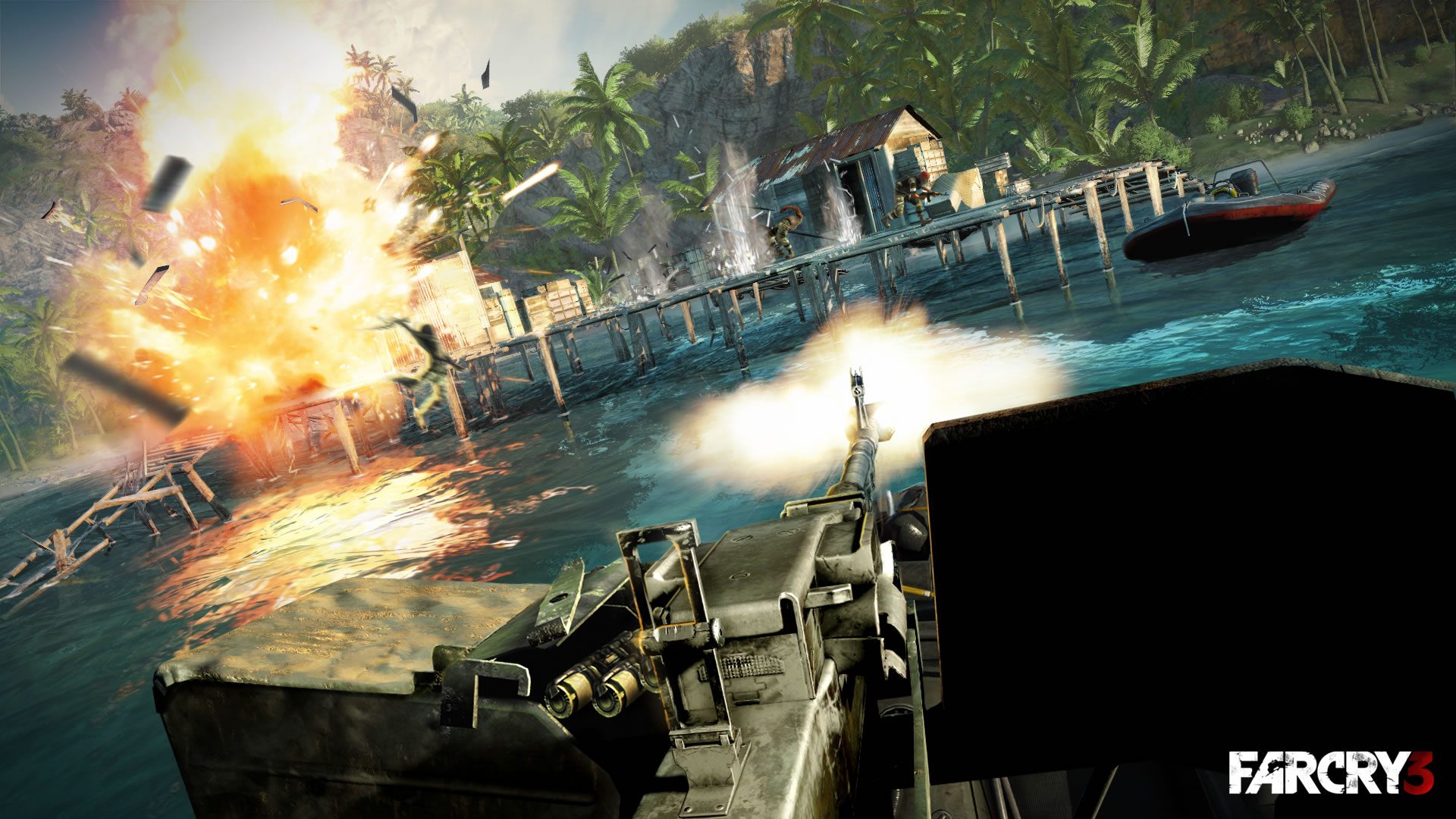Designed exclusively for PC, the original Far Cry sold 730,000 copies in the first four months following its March 2004 release and was hailed as one of the best shooters, combining an adventurous plot that followed ex-Army operative Jack Carver's heroic exploits on a mysterious Micronesian archipelago with engaging sandbox combat and some of the period's most advanced graphics courtesy of CryEngine.
Despite Far Cry's success, Crytek shifted gears to a fresh IP, Crysis, instead of focusing on a follow up to its previous hit – a decision that came at least partly because the studio felt Far Cry's fiction was too restrictive. Nonetheless, Ubisoft (Far Cry's publisher) had no intentions of letting the property fizzle out, and its Montreal outfit released a multi-platform sequel in October 2008.
Having been developed by a different studio, Far Cry 2 was considerably different from its predecessor. Among the most notable changes was the use of a heavily modified version of CryEngine called Dunia. The title also featured new characters, a fresh setting, a more open world and new gameplay mechanics. Some gamers heavily criticized those changes, but Far Cry 2 was still positively received and sold well.

Having passed four years since Far Cry 2's arrival, Ubisoft has revisited the franchise this holiday season with a third entry that more closely resembles the franchise's 2004 debut. Far Cry 3 89 is set on a tropical island, this time found somewhere at the intersection of the Indian and Pacific Oceans, and the story involves rescuing your kidnapped friends from the island's unhinged inhabitants.
The latest release is built using an advanced version of the Dunia engine called Dunia 2, which is said to feature new water rendering technology, a realistic weather system, advanced AI technology, a new animation system, realistic facial expressions, motion capture technology and global illumination – many of which are made possible by the game's adoption of DirectX 11 and can only be experienced on the PC version.
Based on the screenshots we saw leading up to the game's release, we were expecting it to be highly demanding and at least we hope that it can take advantage of the latest and greatest graphics cards and processors. If so, it would join a few other recent releases (namely Hitman: Absolution and Medal of Honor: Warfighter) that also managed to tax our high-end gear. Let's toast some silicon...
Testing Methodology
We'll be testing 29 DirectX 11 graphics card configurations from AMD and Nvidia. The latest drivers will be used, and every card will be paired with an Intel Core i7-3960X to remove CPU bottlenecks that could influence high-end GPU scores.
We're using Fraps to measure frame rates during 90 seconds of gameplay footage from Far Cry 3's third chapter, Dr. Earnhardt's Mansion. Our test begins on one of the nearby islands under a radio tower. At the start of the test, a nearby patrol vehicle approaches and is taken out using a sniper rifle, then on foot we run through some dense vegetation to a nearby enemy camp where some hostiles are engaged briefly before the test ends.

We'll test Far Cry 3 at three common desktop display resolutions: 1680x1050, 1920x1200 and 2560x1600, using the DX11 mode. For the ultra-quality test, we'll set the 'overall quality' in the video quality menu to ultra while also setting the MSAA level to 4. The high-quality test will be conducted with MSAA disabled with the overall quality setting on high.



